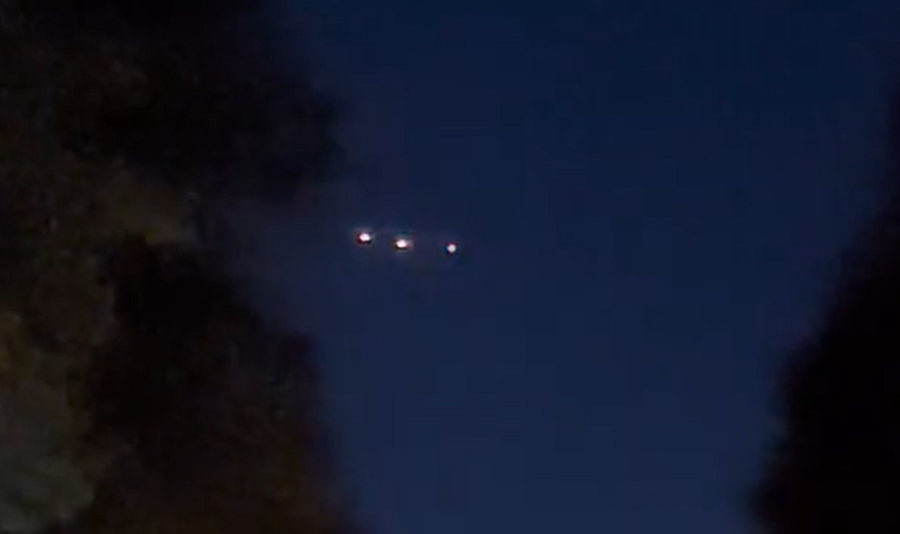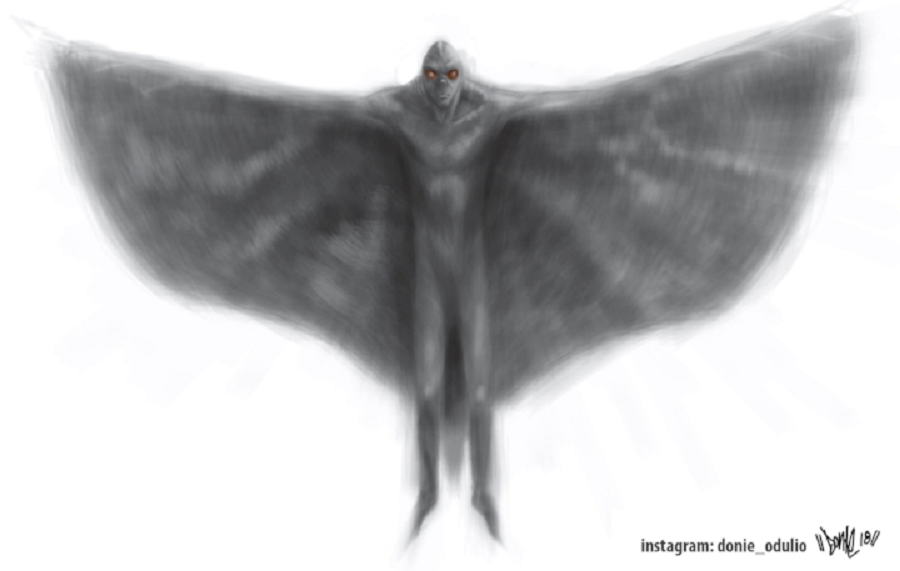'Tic Tac' UFO 'Wasn’t Behaving within the Normal Laws of Physics,' Says Fighter Pilot Who Filmed It
A still image from the footage shot by Underwood.
In a recent interview with New York Magazine, former fighter pilot Chad Underwood admitted that the ‘Tic Tac’ UFO he filmed with the targeting camera of his F/A-18 Super Hornet while serving aboard the USS Nimitz in 2004 performed maneuvers that should have been impossible.
In answer to questions regarding the unidentified flying object’s nature, Underwood responded:
The thing that stood out to me the most was how erratic it was behaving. And what I mean by “erratic” is that its changes in altitude, air speed, and aspect were just unlike things that I’ve ever encountered before flying against other air targets. It was just behaving in ways that aren’t physically normal. That’s what caught my eye. Because, aircraft, whether they’re manned or unmanned, still have to obey the laws of physics. They have to have some source of lift, some source of propulsion. The Tic Tac was not doing that. It was going from like 50,000 feet to, you know, a hundred feet in like seconds, which is not possible.
Yes. That was the thing that was the most interesting to me: how erratic this thing was. If it was obeying physics like a normal object that you would encounter in the sky — an aircraft, or a cruise missile, or some sort of special project that the government didn’t tell you about — that would have made more sense to me. The part that drew our attention was how it wasn’t behaving within the normal laws of physics. You’re up there flying, like, “Okay. It’s not behaving in a manner that’s predictable or is normal by how flying objects physically move.”
Well, normally, you would see engines emitting a heat plume. This object was not doing that. The video shows a source of heat, but the normal signatures of an exhaust plume were not there. There was no sign of propulsion. You could not see the thing that the ATFLIR pod should pick up 100 percent of the time: the source of heat and exhaust that a normal object flying would give you.
Crawford is the eleventh serviceman to come forward recently regarding UFOs encountered during active military service—including five others who served aboard either the USS Princeton or USS Nimitz during the 2004 sightings, and five Navy pilots who said that encountering unidentified flying objects was an “almost daily” occurrence over the Atlantic Ocean off of Virginia Beach from the summer of 2014 through March 2015.
This news follows the chain of information slowly released through To the Stars…Academy of Arts & Science (TTSA) and government sources since 2017, when news broke of the Pentagon’s secretive UFO project—known as the Advanced Aviation Threat Identification Program (AATIP).
Most recently, Pentagon spokesperson Susan Gough, in an emailed statement to John Greenewald, Jr. of The Black Vault, denied that the AATIP was in any way involved with investigating UFOs—or unexplained aerial phenomena (UAP)—a term coined to combat the stigma attached to UFOs.
That statement was contradicted by Luis Elizondo—a former Department of Defense (DoD) intelligence officer who claims to have been program head for the AATIP, and who currently serves as TTSA’s Director of Global Security and Special Programs—along with former Senate Majority Leader Harry Reid; both of whom maintain that the AATIP’s primary focus was the investigation of UFOs.
TTSA also recently announced that it will be partnering with the U.S. Army to “advance materiel and technology innovations.” Prior to that, Luis Elizondo told the New York Times that the results of any studies done on the “metamaterials” which TTSA announced were in their possession last July are still pending, due to the employment of the “scientific method.”
The five Navy pilots’ testimony mentioned earlier in this article prompted several senators to request and receive private briefings on the encounters last June. In response to questions regarding the pilots’ reports, President Trump has gone on record as saying that he does “not particularly” believe that Navy pilots are seeing UFOs.
It is unclear at this time if the president’s statements reflect anything other than a general disinterest in the subject.
The narrative built from those accounts is not without controversy in the UFO community, having received some pushback from researchers. That argument stems mostly from the seemingly cyclical nature of the government’s public interest in UFOs, and the disinformation associated therewith—exacerbated by the presence within TTSA of former intelligence agency personnel in prominent positions. Those long-festering doubts of TTSA’s trustworthiness due to the corporation’s association with the U.S. government are now compounded following the public benefit corporation’s new agreement with the Army.
John Greenewald, Jr. has done significant fact checking on claims made by TTSA and its representatives, recently publishing a series of statements that show the U.S. Navy never cleared for public release three UFO videos distributed by Elizondo and TTSA, although the Navy did acknowledge the objects within the videos—referred to respectively as “FLIR1,” “Gimbal,” and “GoFast”—were “unidentified aerial phenomena.” FLIR1 was the name given to the ‘Tic Tac’ video recorded by Chad Underwood.
Given these discrepancies in TTSA’s statements and their now apparent partnership with the U.S. Army, more people within the UFO community are expressing concerns that the public benefit corporation was created as a massive spin operation to control the narrative surrounding unidentified flying objects. However, the disagreement between TTSA and the Pentagon regarding the AATIP’s activities complicates that opinion, calling into question how much cooperation exists between the public benefit corporation and the U.S. military.
Regardless, as more former and current military personnel come forward to relate their experiences with UFOs, there is little doubt within the community that, if nothing else, the cases being presented have merit.
To report your own encounter with the impossible, reach out to us directly at the Singular Fortean Society through our contact page.
If you enjoyed this article and would like to support the Singular Fortean Society, please consider becoming an official member by signing up through our Patreon page—membership includes a ton of extra content and behind-the-scenes access to the Society’s inner workings.




















